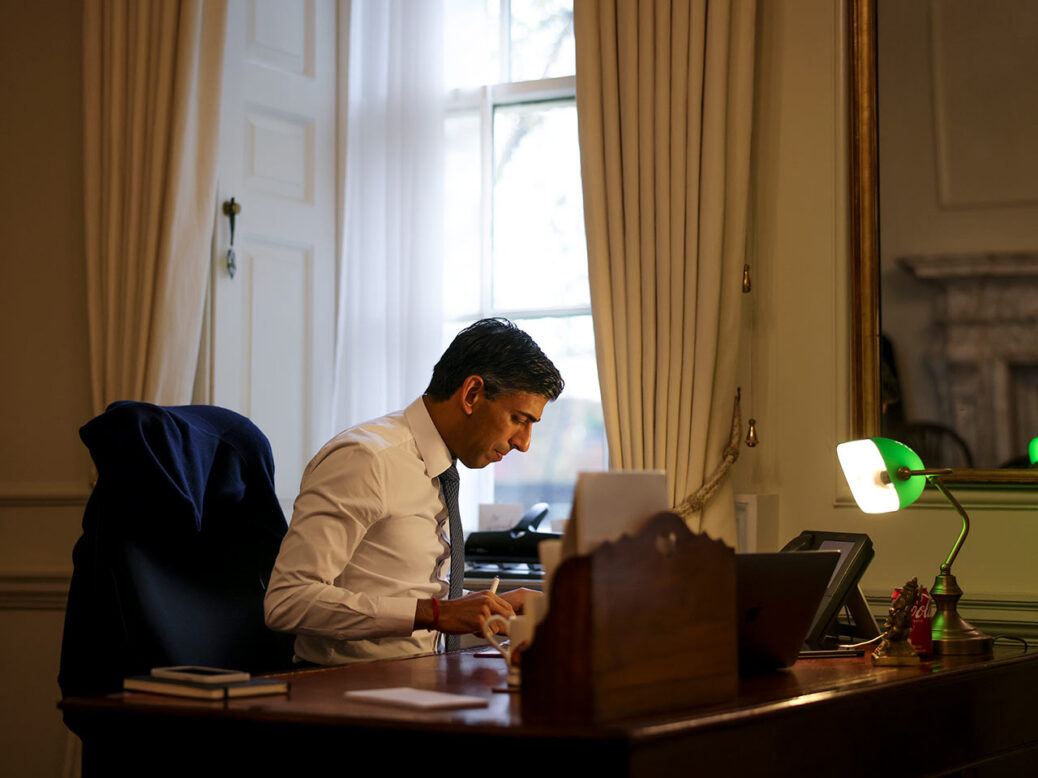
Imagine, for a second, a UK prime minister declared an England victory at the Euro 2024 football championship to be his main policy goal.
Absurd, clearly. But Rishi Sunak’s promise to reduce inflation is of the same quality, if perhaps less obviously so. The promise is cynical because we all know that the government does not control inflation. In theory, it controls public sector pay. In practice, we can all see right now what happens when it tries to do so.
The bigger issue is that inflation might not fall by as much as Sunak thinks, no matter what he does. It is the England-fails-to-qualify scenario in our hypothetical comparison. There would be no political upside for him because he unwisely claimed ownership of the wrong subject.
[See also: Angela Merkel’s failures serve as a warning to British leaders]
It is a common misconception that when inflation is down, prices fall. In reality, they just rise by less. What is unaffordable today will be even more unaffordable tomorrow unless incomes catch up.
What makes an inflation index an unsuitable political theme is that it rarely corresponds to our own life experiences. We know that headline inflation rates are coming down because last year’s energy price rises will fall out of the annual index. But that index is a statistical rear-view mirror. It tells us what happened last year. Monthly rates don’t suffer this problem but are too noisy to be useful. Core inflation rates, which exclude volatile items such as energy and food, are an alternative measure preferred by some. What I often find is that people pick the index that fits their own prejudice. If you absolutely want interest to fall, there is an index for you out there. For Sunak, that index is the headline rate.
But be careful: political economy is not a statistical bragging contest. Inflation can easily fall from more than 10 per cent to 5 per cent in no time, but nobody will feel better for it. To get inflation down to 2 per cent will take longer, and will be unpleasant. An annual rate of 2 per cent is the target for most central banks in the world, including the Bank of England. They chose that number because it is low enough for people not to worry about inflation. Even when we reach that point, it will not be the end of the political struggle. People will still care about the loss in real incomes.
So what do we actually know about inflation? One fact is that energy prices have fallen this year to below where they were when Russia invaded Ukraine. This is good news, and not something many of us expected. But energy prices are volatile, and may rise again later this year. Food prices are still rising. Services inflation is running high. There is an inflationary dynamic in the economy that exists independently of Vladimir Putin’s oil and gas.
One of the factors that drives this dynamic is wages. The Office for National Statistics reports that growth in average pay among employees in the UK was 6.1 per cent annually in the period from August to October last year. This is much higher than the 2 per cent inflation target, but well below headline inflation rates. Despite the wage rises, employees have suffered a fall in real incomes. They will over time try to make up that loss. There won’t be a 1970s-style wage-price spiral. But you don’t need a wage-price spiral for wages to assert pressure on inflation. The pressure may not be extreme, but persistent.
Then there are structural shifts. Climate change constitutes an inflationary pressure in itself because of the impact on food prices and insurance rates. The economists Charles Goodhart and Manoj Pradhan argued in a recent book that ageing societies would bring about a reversal of income inequality and a revival of inflation.
The low inflation of the previous two decades was in part due to China and India releasing millions of workers into the global industrial labour market year after year. EU enlargement increased the supply of low-wage workers from eastern Europe. China’s population has now started to shrink. Brexit brought a fall in immigrant labour. In Germany, there are now reports of acute labour shortages in many sectors. The strong deflationary pull of the last two decades is turning into an inflationary push.
Inflation happens when there is more aggregate demand in the economy than supply. A recession might take care of inflation by reducing demand. But the economic data we have been getting over the past few weeks suggest that growth is holding up better than most of us were expecting. If inflation stems from excess demand, then that problem persists.
Perhaps the honest assessment is that we cannot be sure of where this will lead. Central banks are right to be cautious. What I can say with confidence is that you cannot make a credible case for a fast drop in inflation solely based on the current data or from historical evidence. We have never been through anything like this.
Sunak’s inflation gambit is based on a judgement that is typical of the financial community he knows well. He is still a Goldman Sachs banker at heart. A bank’s business model depends on interest rates being low forever. The Conservatives, too, are a party of home ownership and low interest rates. In each other, they found a perfect match. But the world around them has changed.
There is one crucial difference between banks and governments. Banks place all sorts of risky bets every day. When a bank fails, it gets bailed out by the government. When a government fails, it gets booted out by the electorate.
So Rishi Sunak might as well have bet on Euro 2024.
[See also: As globalisation fragments, politics is again reigning supreme over economics]
This article appears in the 01 Feb 2023 issue of the New Statesman, The Great Housing Con





